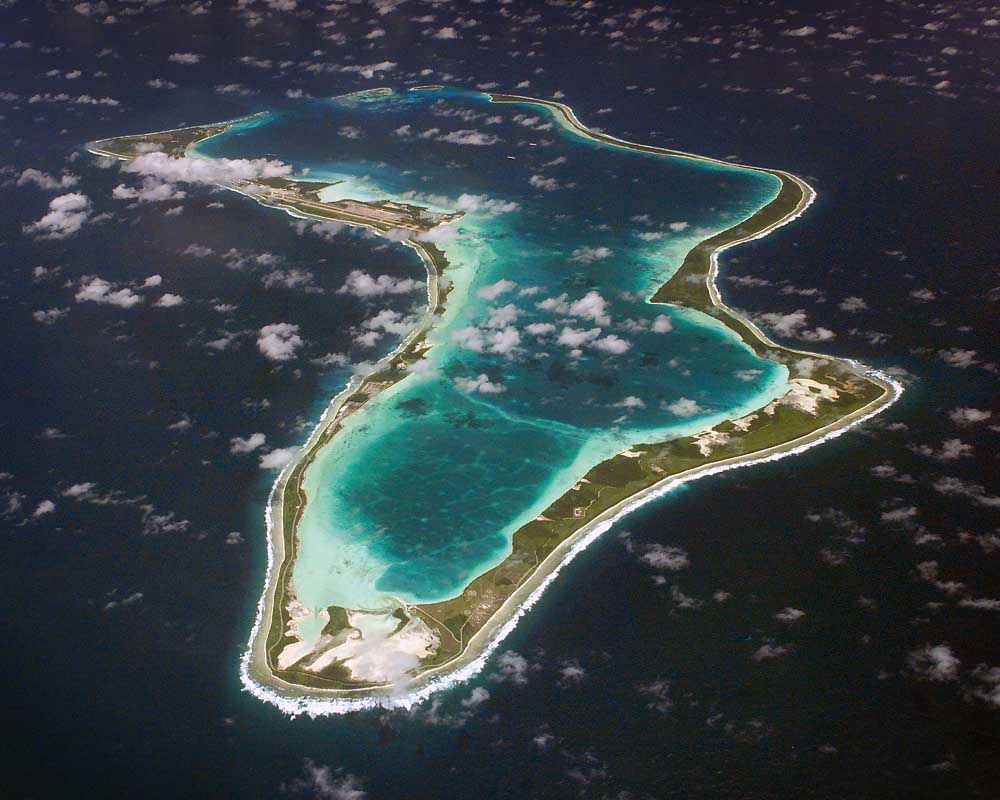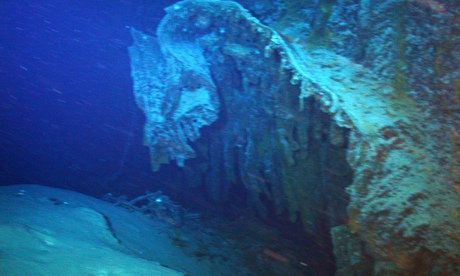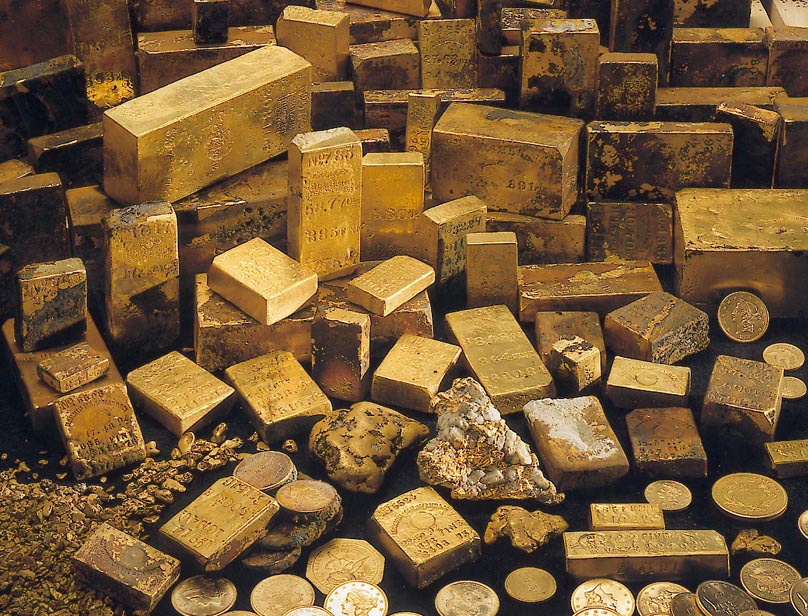HOT NEWS !
Stay informed on the old and most recent significant or spectacular
nautical news and shipwreck discoveries

-
Ponte Vedra shipwreck identified
- On 01/04/2014
- In Parks & Protected Sites
- 0 comments

By Dan Scanlan - The Florida Times-Union’Twas a nor’easter that did in the valiant old schooner that wrecked in 1947 on Mickler’s Landing in Ponte Vedra Beach.
Archaeologists now have confirmed the recently revisited wreck is the Bermuda-based Deliverance, a two-masted “motor vessel” whose 80 feet of iron and timber remains last revealed itself during a New Year’s low tide.
Starting with a local history book and archives in Jacksonville Beach, then a list of 10 area shipwrecks and ultimately the Internet archives of a Singapore newspaper, the Lighthouse Archaeological Maritime Program uncovered the name of the 67-year-old wreck that had reappeared on the beach in January.
“It was pretty cool, actually,” said Chuck Meide, director of the St. Augustine Lighthouse and Museum-based program. “You feel like an armchair archaeologist because we figured it out after we were back from the field.
Everything else was done from the chair with a computer in front of us. Doing research has changed over the years.”
The eroded hulls of wrecked ships resurface from time to time along Ponte Vedra’s coastline during heavy storms. About five iron ribs of this one showed up in 2008, and Meide’s staff checked the wreck.
It resurfaced New Year’s Day with 42 ribs uncovered for the archaeologists to study.
At the time Meide said it could be a wreck illustrated in Karen Harvey’s book, “St. Johns County: A Pictorial History.” That photograph showed a two-masted schooner beached near Mickler’s Landing with its hull parallel to the shore.
So did an image they found from the archives of the Beaches Museum and History Park, with notes saying it was a “Bermuda boat wrecked on the beach.”
-
World’s most pristine waters are polluted by US Navy human waste
- On 24/03/2014
- In Maritime News
- 0 comments

By Cahal Milmo - Independent
The American military has poured hundreds of tonnes of human sewage and waste water into a protected coral lagoon on the British-owned base of Diego Garcia over three decades in breach of environmental rules, The Independent can reveal.The Indian Ocean base on the Chagos Islands has been one of the world’s most isolated and controversial military installations since Britain forcibly removed hundreds of islanders in the early 1970s, abandoning them to destitution, to make way for US forces including nuclear submarines and bombers.
The British Government has repeatedly underlined its commitment to maintaining the pristine environment of the islands, which are known as the British Indian Ocean Territory (BIOT) and were four years ago declared the world’s largest marine reserve.
Despite these undertakings, it has emerged that US Navy vessels have been discharging waste water, including treated sewage, into the clear lagoon ever since a naval support station was established on Diego Garcia in the early 1980s.
According to scientific advisers, elevated levels of nutrients caused by the waste – which have resulted in nitrogen and phosphate readings up to four times higher than normal – may be damaging the coral.
Friday night, campaigners fighting for Chagossians to be allowed to return accused the British and US authorities of double standards by using the unspoilt character of the archipelago as a reason to prevent repopulation while themselves creating pollution.
Philippa Gregory, author and patron of the UK Chagos Support Association, said: “While the people who were born and bred on Chagos are not allowed to return to their island, the military base of Diego Garcia houses about 5,000 US servicemen and women and ancillary workers.
It makes no sense to suggest that Chagossians cannot return because of pressure on the environment.”
-
Britain urged to sign up to shipwreck treaty to protect underwater heritage
- On 24/03/2014
- In Miscellaneous
- 0 comments

By Dalya Alberge - The GuardianBritain's rich maritime legacy is under threat from commercial treasure hunters who are accused by experts of plundering and destroying the nation's underwater heritage.
A group of leading archaeologists and historians warn that unless the government intervenes to protect scores of historically significant wrecks lying beyond the country's territorial waters, sites including the graves of those lost at sea could be exploited and lost for good.
On Monday the group, which includes leading scholars from Oxford University and the British Museum, will call on the Foreign Office, the Ministry of Defence and the Department for Culture, Media and Sport to sign up to a United Nations treaty on protecting underwater remains.
"We've got a wonderful reputation for dealing with cultural heritage on land, and so far we've got a pretty abysmal reputation for dealing with it at sea," Barry Cunliffe, emeritus professor of European archaeology at Oxford, told the Observer.
The archaeologists want Britain to join 45 other nations in ratifying the 2001 Unesco convention on the protection of the underwater cultural heritage, a legal framework for protecting such sites.
In a briefing document to be presented to William Hague, the foreign secretary, they warn that unless it signs up to the treaty, Britain will be largely incapable of protecting wrecks lying beyond its waters.
The report argues that a number of threats including natural erosion, damage from fishing vessels and illegal looting mean that "simply being hidden in deep water no longer offers protection".
It warns that British law has no deterrent to people from taking objects from the seabed.
Britain's maritime influence once spanned the globe, and sunken ships are the last resting place of many of its seafarers. The Royal Navy alone lost at least 2,227 vessels between 1605 and 1918; some 1,373 in foreign waters.
These include HMS Aboukir, HMS Cressy and HMS Hogue, armoured cruisers which in September 1914 were patrolling off the Dutch coast when they were torpedoed by a U-boat, killing 1,459 men.
Cunliffe voiced alarm that wrecks are disturbed and damaged in the hunt for cannon and potentially lucrative cargoes: "They are disturbing them in a way that no respectable archaeologist would do."
He adds that many shipwrecks are at great depths, and the techniques are "rather crude and can be very destructive".
-
Odyssey Marine to recover gold from Carolina shipwreck
- On 04/03/2014
- In Treasure Hunting / Recoveries
- 0 comments

By Amanda Lee Myers - Tampa TribuneA Tampa company has reached an agreement to recover the remaining gold from a ship that sank off the Carolina coast in 1857 and more recently has been embroiled in legal fights involving a fugitive treasure hunter, the firm announced today.
Odyssey Marine Exploration can begin working to recover gold bars and coins from the SS Central America as soon as April, pending approval of the agreement from an Ohio judge.
In 1988, shipwreck enthusiast and Ohio native Tommy Thompson led an expedition that found the vessel, also known as the Ship of Gold. He took gold from the ship that later sold for between $50 million and $60 million.
The treasure became the subject of various lawsuits involving a group of Ohio investors who paid $12.7 million to fund Thompson’s expedition but say they never saw any returns and workers who said they weren’t properly paid for signing confidentiality agreements to keep the ship’s location and other information secret.
Thompson, described as a secretive Howard Hughes-like figure by an attorney on one of the cases, has been a wanted fugitive since August 2012 after he failed to show up for a key court hearing. He was last seen at a mansion he was renting in Vero Beach along Florida’s Treasure Coast.
Liz Shows, a spokeswoman for Odyssey Marine, declined to say how much gold is believed remaining on the ship.
Ira Kane, who was appointed receiver over Thompson’s companies after he fled, is overseeing the project to recover the remaining gold and has exclusive salvage rights over the shipwreck, granted to him by a federal court judge in Virginia.
Kane chose Odyssey Marine for the salvage operation after considering proposals from nine companies, the Florida firm said in a news release.
“We’re now looking forward to their team completing the work that was started more than 25 years ago,” Kane said in the news release.
The S.S. Central America was in operation for four years during the California gold rush before it sank after sailing directly into a hurricane in September 1857; 425 people were killed and thousands of pounds of gold sank with it to the bottom of the ocean.
-
US treasure hunters ready to snatch gold from the jaws of Victory
- On 04/03/2014
- In Treasure Hunting / Recoveries
- 0 comments

By Victoria Ward - The TelegraphUS treasure hunters should be banned from raising the wreck of one of Britain’s greatest warships and taking some of the millions of pounds of gold coins she is believed to contain, leading archaeologists and descendants of the crew demand today.
They said that allowing HMS Victory, predecessor to Nelson’s flagship, to be exploited for commercial gain would be a “flagrant breach” of the military covenant and an “appalling betrayal” of more than 1,000 Royal Navy sailors who died.
The wreck was discovered by the US company Odyssey Marine Exploration in 2008, 264 years after it sank in a storm off the Channel Islands. Experts believe it may contain gold worth hundreds of millions of pounds as well as 100 bronze cannon.
The Ministry of Defence concluded that recovery could go ahead under the auspices of a charity. Lord Lingfield, formerly Sir Robert Balchin , a descendant of Admiral Sir John Balchen , the ship’s commander, founded the Maritime Heritage Foundation for the purpose.
The foundation has submitted its plans to the MoD and the Department for Culture, Media and Sport, and signed a contract with Odyssey which would give the Florida-based firm 80 per cent of the value of coins and bullion recovered and 50 per cent of the value of cultural artefacts.
The Government is expected to make an announcement soon on whether it will sanction the proposals. No work can go ahead without the approval of Philip Hammond, the Defence Secretary, but the plans are fraught with controversy.
-
Sunken submarine HMAS AE2
- On 03/03/2014
- In World War Wrecks
- 0 comments

By Bridie Smith - The AgeOne of the last "time capsules" of the First World War will be opened in June, when researchers drop a high-definition camera into an Australian submarine almost a century after it was sunk and its crew taken as prisoners of war.
The wreck of HMAS AE2, discovered in 1998, has remained untouched on the silty floor of Turkey's Sea of Marmara since being scuttled by Commander H.G."Dacre" Stoker during the Gallipoli campaign.
"We have effectively got an underwater time capsule that has not been opened since 1915," said Roger Neill, the expedition's science director.
Dr Neill, who leads the automation and unmanned maritime systems unit at the Defence Science and Technology Organisation, said the project would not just survey and secure the site but install a cathodic protection system around the wreck to stop the metal from corroding, and a marker buoy to protect it from shipping traffic and drag nets.
Chief pilot of the remotely operated vehicle, electrical engineer Peter Graham, designed the high-definition camera at the DSTO Port Melbourne base. He said the expedition would collect a terrabyte of data a day during the 17-day field trip.
Costing up to $5 million, the ambitious project to film inside the submarine began in 2004. The years of preparation included building a replica submarine, using the original plans, to test camera equipment in Geelong's Corio Bay.
-
Zeroing in on what caused Civil War submarine's sinking
- On 23/02/2014
- In Famous Wrecks
- 0 comments

From CNNBorn and built amid gray-cloaked secrecy during the American Civil War, the H.L. Hunley -- the first submarine to sink an enemy ship -- has held tight to its murky mysteries.
The 150th anniversary of the Hunley's daring and dangerous raid will be marked this weekend and Monday, but the overarching question remains: What caused the submarine and its eight-member crew to slip to the bottom of the sea on the moonlit evening of February 17, 1864, after it signaled to shore a success that changed naval warfare.
The Hunley, housed at a laboratory in North Charleston, South Carolina, has yielded its secrets slowly and sparingly, even to researchers armed with the latest in technology.
Was the loss of the Hunley the result of the torpedo's detonation? An unsecured hatch? Or perhaps a lucky enemy shot that blasted a hole in the Confederate vessel's viewing port?
And why were the crew's remarkably preserved remains found at their stations, rather than jammed together near an escape hatch?
These and other questions continue to enthrall scientists and historians as the sesquicentennial is observed with tours and events in the Charleston area.
There is hope that some additional clues may emerge soon.
The Hunley Project, a consortium of researchers, scientists and state and federal agencies, this year begins a conservation phase that might add an important piece to the puzzle of what happened to the submarine.
A chemical bath will peel away the final layer of sediment that covers the exterior of the well-constructed hull and the Hunley's interior.
-
Man accused of theft in shipwreck coins case
- On 20/02/2014
- In Scams, Thefts
- 0 comments
By Erika Pesantes - Sun SentinelA Fort Lauderdale man is accused of illegally keeping this booty: colonial Spanish coins salvaged from a shipwreck that he had sold to a collector for $190,000.
William Wolfe, 70, was charged with grand theft in connection with the October 2009 incident at his Pompano Beach gallery in the 3900 block of Federal Highway.
Authorities say he received payment for the coins, but didn't deliver his end of the deal. State corporate records show that Universal Rare Coins and Gallery is no longer active at that location.
Wolfe was arrested Monday and released from jail later that evening after posting $7,500 bond, records show. He could not be reached for comment Wednesday despite a call to a listed cellphone number.
According to a Broward sheriff's report, Wolfe contacted Dennis Raber and offered him a lot of about 1,100 silver coins that was reportedly salvaged from an 1810 "Coconut wreck" discovered off Bermuda.